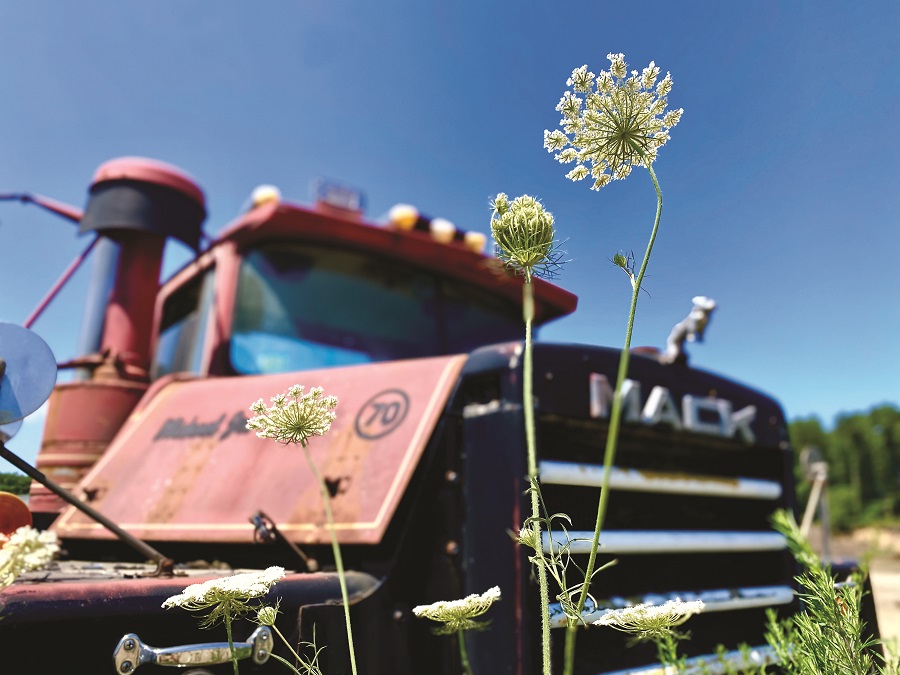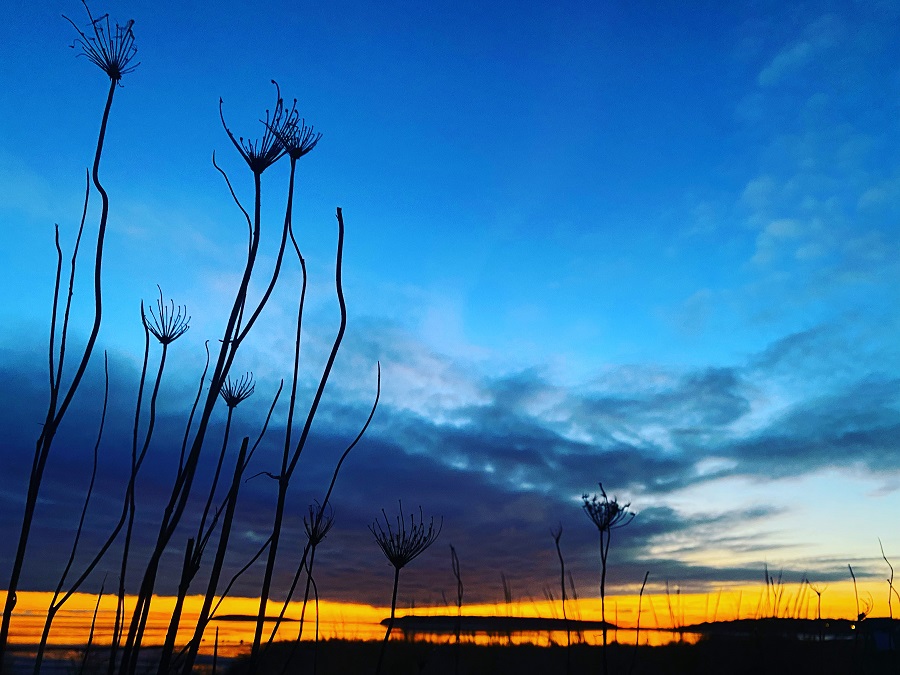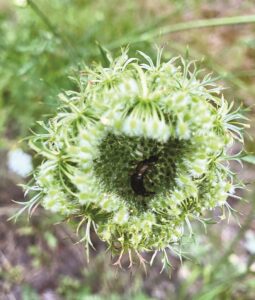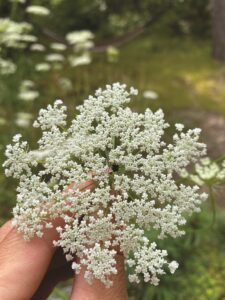The rains that fell in spring and early summer have stopped by now, and most plants have plateaued in their upward movement. It is August; everything is resting for a moment in the dry earth and the heat. But at the edges of paths that run through meadows and fields, one plant thrives, its nodding white flowers — material, but lighter than air — waving in gentle breezes. They are held on narrow, straight stems and stand above the grass and knapweed, reaching over guardrails into the dusty roadside sunlight.

Queen Anne’s lace, Daucus carota, is a wild carrot, the feral, untamed cousin of the carrots we grow to eat. Beneath all the lace and finery of its flower and fernlike leaves is a pale, knobby root that digs deep into the sandy soil. It smells of carrot and can be eaten early before it hardens to a woody stump. This root is the storehouse of resources and moisture that allow the plant its refined outward expression. Here is delicacy supported by substance and depth.
Queen Anne’s lace is considered an invasive weed in the grasslands, but not in Massachusetts. It thrives here on roadsides and turned-over sites where few things survive. But it prefers alkaline soil to our acidic conditions and maybe for that reason has not become a runaway. I love it for the elegance it exhibits in the face of odds and for how it weaves sandy banks and hot sun into lacework.

From far away, the flowers seem to float in the air above the plants — the stems are so thin they are almost invisible. Each flower head is a broad, shallow umbel of frizzy white, face to the sun, offering a light, dry, sweet scent to the summer sky. Above the layer of lace is a buzzing halo of wasps, butterflies, and bees collecting pollen. The flowers bounce when pollen-laden bees land on them.
It is the flower heads that stop me. It’s not often that I pass a stand of them without reaching out to hold one, tipping it to see the intricate candelabra structure under the raft of white lace. Each one is a burst of delicate, arching spokes that emanate from a central node, the base of which is guarded by a frilly bract that forms a green cage. The spokes grow in ever-tightening concentric whorls, and at the end of each is a tiny replica of the larger flower head, a structure repeated in perfect miniature.

This is the part that excites me most, to see a successful design repeated, like crystals whose forms repeat themselves at different scales. Even the little bract cage that surrounds the base of the flower heads is repeated here in miniature. Held at the end of each of the tiniest threads is the plant’s true flower, a five-petaled white-and-cream array of silky-soft tissue.
At the very center of some of the umbels — not all — is a mysterious thing: a deep purple flower whose purpose is not known. It is coarser and larger-petaled than the fine white flowers surrounding it. Storytellers say it is the blood of the queen herself, from a finger pricked while making the lace. One theory is that this darker flower serves as a guide to pollinators, an attractor for their color-sensitive eyes to follow.

As the flowers go by, the thin spokes dry, contract, and fold up to form deep, enclosed cups. Pollinated flowers turn to seed, so packets that contain the future are held inside this protective cage. As summer falls away, rain and wind break down this structure, releasing the seeds to new fields.
My grandmother Grace was a tough old Ohio farmer known for making up names for plants. Grandma Goody called Queen Anne’s lace “Ann-a-roadia,” so-named for its side-of-the-road ways. I think of her when I look at this summer flower, remembering how its needle-fine spokes will stand against winter sunsets, ink silhouettes against an orange and purple backdrop, elegant to the very end.



